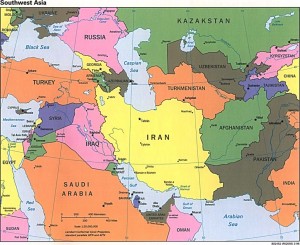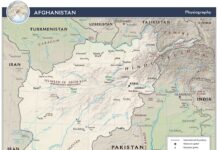 By Naade Ali and Guest Analyst Mohammad Siraj Khan
By Naade Ali and Guest Analyst Mohammad Siraj Khan
Context
The three-phase ceasefire agreement between Israel and Hamas, brokered in January 2025, aimed to end the protracted conflict in Gaza. Despite initial progress, the deal collapsed by late February due to disagreements over its implementation. Soon Israeli forces resumed a ground invasion into central and southern Gaza and expanded into the north of the enclave.
Phase One of the agreement had envisioned initial ceasefire and humanitarian measures to last 42 days. This was to be accompanied by hostage and prisoner exchanges and partial withdrawal of Israeli forces from populated areas in Gaza, with significant increase in humanitarian assistance to Gaza. Phase Two would include comprehensive agreements with negotiations for the release of remaining hostages and full military withdrawal of Israeli troops from Gaza – accompanied by formal cessation of hostilities. It was Phase Three that focused on reconstruction and long-term stability with international support, along with security guarantees to ensure long-term peace while averting future flare-ups.
Israel claimed that the negotiations with Hamas were ineffective, and Netanyahu warned that continued military pressure on Hamas was essential for hostage release and maintained that the current actions were ‘just the beginning.’ As tensions continue to rise, the Israeli cabinet approved an escalation of military pressure on Hamas, with Prime Minister Netanyahu asserting that the approach was “working” to secure a deal for the release of hostages held in the Gaza Strip.
Subsequently, Hamas agreed to accept an Egyptian-mediated proposal to release five living hostages in exchange for a 50-day ceasefire in Gaza. However, Israel rejected the offer, insisting on the release of 10 or 11 hostages as a prerequisite for resuming the truce.
Netanyahu also indicated his readiness to negotiate the final phase of the deal on his terms, which would see Hamas leaders permanently leave Gaza. “Hamas will lay down its weapons. Its leaders will be allowed to leave [Gaza]. We will take care of general security in the Gaza Strip and enable the implementation of the Trump plan, the voluntary immigration plan… That’s the plan. We’re not hiding it,” he stated. Adding to the Prime Minister’s warnings, Defense Minister Katz has also earlier threatened Hamas with the progressive annexation of Gaza, stating that “the more Hamas persists in its refusal to release the hostages, the more territory it will lose, which will be annexed to Israel.”
U.S President Donald Trump who took credit for the initial ceasefire also backed Israel’s recent military action. White House Press Secretary while blaming Hamas for Israel’s decision to renew its offensive confirmed that President Trump “fully supports Israel“. Upon assuming power, Trump has already ensured Netanyahu that securing Israel’s long-term national security remains a Washington’s key objective.
Trump’s support for Netanyahu was evident in his proposal to neutralize the Hamas threat in Gaza by displacing the entire population and permanently resettling them in countries such as Egypt and Jordan, while also suggesting long-term U.S. control over the strip in the post-conflict period.
Arab Plan for Gaza and Disarmament of Hamas
In response to backlash from Muslim-majority countries within the Organization of Islamic Cooperation (OIC), Trump abandoned his mass displacement plan announced earlier. Still cautious of his intentions, members of the Arab League proposed an alternative post-war plan for Gaza, advocating for its reconstruction at a cost of $53 billion under the administration of a temporary committee of independent experts, along with the deployment of UN peacekeepers to prevent further escalation of the crisis.
The Palestinian Authority and Hamas have both endorsed the Arab plan. Western nations, including France, Germany, Italy, and the United Kingdom, have also supported it, viewing the end of Hamas’s control in Gaza as a step toward eliminating the threat to Israel.
However, the U.S. and Israel have rejected the proposal, arguing that it does not prioritize Gaza’s disarmament, fails to address Hamas’s future in the region, and allows the Palestinian Authority to return without sufficient security guarantees to Israel. Meanwhile, Israel plans to establish a government agency under the Defense Ministry to oversee the “voluntary departure” of Palestinians from Gaza.
Saudi Arabia and other states have condemned Israel’s actions, calling them ongoing violations of international law that pave the way for colonial settlements. These states have consistently advocated for a “two-state solution” to the Gaza-Israel conflict, emphasizing the need for an independent Palestinian state.
Netanyahu’s push to displace Palestinians, coupled with his threats to annex Gaza and Trump’s endorsement, has raised concerns among policymakers in the Muslim world that Trump may abandon the two-state framework in favor of a one-state solution.
Iran-U.S. Standoff And Future of Negotiated Settlement
Adding further complexity to the Middle Eastern geopolitical landscape is the ongoing standoff between Iran and the U.S.-Israel alliance. Iranian nuclear ambitions remain a major concern for both the U.S. and Israel. In response, President Trump has reached out to Iranian Supreme Leader Khamenei, offering negotiations over Iran’s nuclear program, but with a threatening tone. Trump has set a two-month deadline for compliance, warning of severe consequences for Tehran, indirectly referencing potential airstrikes on Iran’s nuclear facilities. “My big preference is that we work it out with Iran, but if we don’t work it out, bad things are gonna happen to Iran,” Trump stated.
In turn, Iran has warned the U.S. of a strong response, suggesting that any attack would turn American bases and its regional allies into “powder kegs.” Recently, Iran showcased its growing military power by revealing an expansive underground missile facility known as “Missile City,” complete with missiles, launchers, engines, and other advanced weapons. Iran’s ballistic missile force remains the largest in the Middle East, offering a strategic deterrent and signaling that any conflict with Tehran would be costly and protracted.
To ramp up pressure, the U.S. has been bolstering its military presence in the Middle East. Secretary of Defense Pete Hegseth recently deployed a second aircraft carrier, the USS Carl Vinson, to join the USS Harry S. Truman strike group, whose deployment was also extended. Additionally, the U.S. sent two B-2 stealth bombers to the Diego Garcia base in the Indian Ocean, a direct warning to both Iran and Yemen’s Houthi militia. These bombers, capable of carrying 30,000-pound “bunker buster” bombs, are now positioned within striking range of Iran.
U.S. officials have sent mixed signals to Iran. Special Envoy Steve Witkoff has advocated for a diplomatic resolution, while White House National Security Advisor Mike Waltz has adopted a more aggressive tone, stating that the administration aims for the “complete dismantling of Iran’s nuclear program.”
Iran views Trump’s nuclear talks as an attempt to force Tehran into relinquishing its defense capabilities. “The U.S. means disarmament when it says negotiation,” said Mohammad Bagher Ghalibaf, Speaker of Iran’s Parliament. Despite the tense environment, Tehran has responded to Trump’s letter, stating that while it would not negotiate “under pressure and threats or increased sanctions,” it is open to indirect talks with the U.S. through third-party mediation. The letter was delivered via Oman.
This suggests that despite the threatening rhetoric between the U.S. and Iran, there is some hope for engagement, as both Washington and Tehran seem intent on avoiding a larger confrontation. Although Iran has not identified the third-party mediator, it is speculated that indirect talks may already be underway through channels in the UAE, and potentially with Saudi Arabia, which has previously offered to mediate talks between Iran and the U.S.
Reports have also surfaced of President Trump visiting Saudi Arabia in May. The Kingdom has emerged as a key diplomatic player, having hosted talks between Russia and the U.S. over the Ukraine issue. It holds significant potential to play a similar role in Iran-U.S. negotiations. Recently, Saudi Foreign Minister Faisal bin Farhan engaged in discussions on regional developments with his Iranian counterpart, Abbas Araghchi, signaling a more reconciliatory tone between Riyadh and Tehran. The Saudi Defense Minister also recently visited Iran and hand delivered a letter from King Salman to Ayatollah Khamanei emphasizing collaboration.
A U.S.-Iran deal would offer Saudi Arabia a prominent role at the negotiation table, aligning with its “positive neutrality” foreign policy. This would further elevate Saudi Arabia’s diplomatic weight, positioning it as a major middle power in global statecraft. Through diplomatic mediation, economic investments, and strategic alliances, the Kingdom has demonstrated its commitment to stability and development
Conclusion
The internationalization of the Gaza conflict has further deepened divisions between the U.S.-Israel bloc and Arab states, overshadowing any prospects for normalization. The once-stable U.S.-Middle East partnership that long served as a cornerstone of the international order, is now experiencing a profound paradigm shift as new alliances and strategic realignments begin to emerge.
Recent developments indicate that both Western and Arab capitals are preparing to make pivotal decisions regarding their stances on Gaza and Ukraine. Arab states are seeking Western support for Gaza’s reconstruction and governance, while Western powers, in turn, are expecting Arab backing on the Ukraine conflict. These shifting dynamics are unfolding in response to President Trump’s high-stakes geopolitical gambits, as he remains determined to pursue his unconventional foreign policy approach—applying pressure and demanding concessions from traditional allies and adversaries alike—moves that are already influencing his evolving Middle East strategy.
Mohammad Siraj Khan is a lecturer, Department of Humanities and Social Sciences, Prince Mohammad Bin Fahd University, Saudi Arabia



